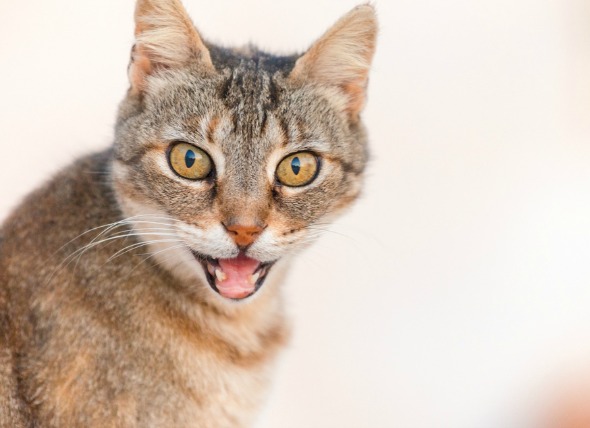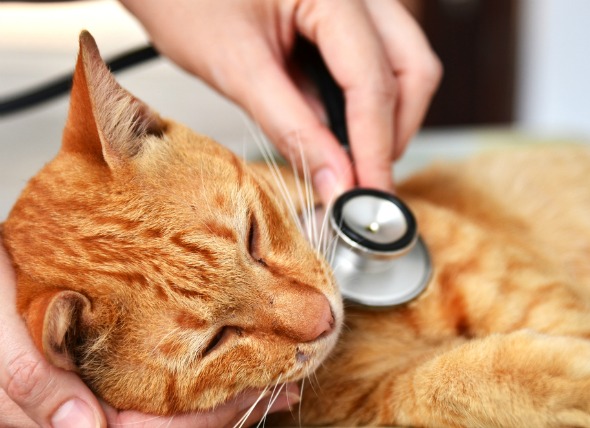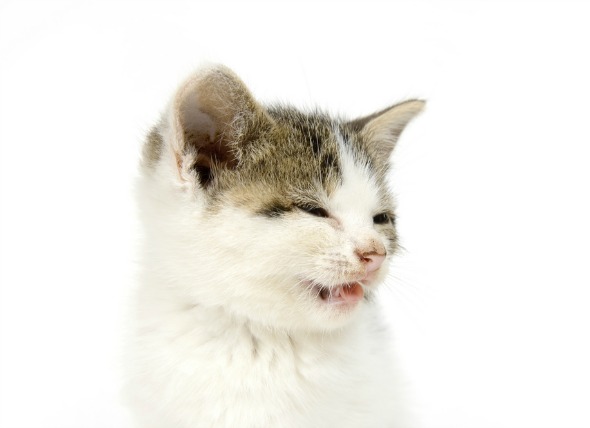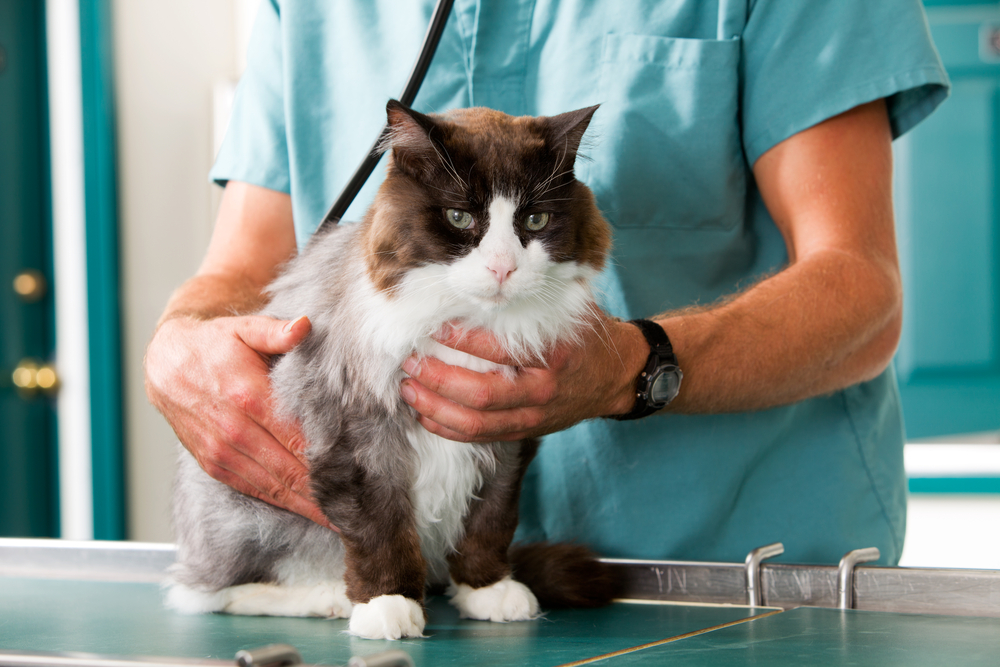
We're still in the beginning phases of learning about animal communication and scientists are discovering more every day about the emotional landscape animals share or experience differently than we do. Truth be told, we've only just begun t0 scratch the tip of the iceberg, but what we've found so far has been infinitely eye-opening and myth-busting.
One of the models that was developed during this pursuit of knowledge was the Cat Stress Test by Kessler and Turner (1997). It outlines 7 different levels of stress experienced by cats which are visible and accurately identifiable to most people - 90% by trained professionals and 75% by laymen.
We'll take a look at those 7 levels in order to provide you with the tools needed to evaluate your cat's welfare and stress signals more accurately which in turn should give you the ability to respond promptly to the situation. Meanwhile, it will teach you some of the body language a cat uses to communicate, expanding your vocabulary in more than just Meowese and increasing your insight and understanding into their outlook on life.
First off, we start with the complete absence of any stress - positive or negative. Think of those moments that they just snooze in the sun peeking through the windows. Life is good! It's that moment we so often envy cats for - that moment that looks like utter bliss.
It often sports the following characteristics:

Alert and attentive to their environment, kitty is enjoying a cozy time lying comfortably in its spot. 'Lounging around' comes to mind when looking at them. Still a pretty enviable position to be in from our perspective. The hustle and bustle of their surroundings is likely providing them with some pleasant stimulation - also known as positive stress.
Characteristics for this stress level:

At this level, we're seeing the first signs of actual stress. The cat is often alert and intently paying attention to whatever is going on - good or bad. The pose often is also considered a show of ambivalence where the cat is ready for anything and has yet to decide how they'll respond - often as they're watching a situation develop.
You'll see this happen when there is an element of unpredictability to the situation as it has not played out yet, for instance when another familiar cat they are not necessarily close with approaches. And chances are that (younger) children trigger this response in their family pet. It allows kitty to anticipate things and go with the flow.
Characteristics are:

!!! Up to this point, stress is a natural and perfectly healthy part of a cat's life. The subsequent phases, however, are harmful when maintained for too long, both physically and psychologically.
Something is going on that is putting your cat on edge. Often it is an acute reaction to the situation that is going on - like a dog approaching, a child pushing their boundaries or even you trying to snatch them for their vet appointment.
If nothing obvious comes to mind, it might be chronic stress. Try to think back to when your cat started sitting like that, to the last change that happened in the house. Chronic stress can endure, even after that actual trigger has been removed. Often it involves a significant change of some sort (a new piece of furniture, a change in work routine, being bullied on the letterbox, ...)
Physical characteristics:

At this point, your cat is in acute fight or flight mode. Adrenaline is pumping through their veins and they're feeling acutely threatened by the situation. Paralysed by fear, they'll often stay where they are unless the situation forces them to take action. Sufface to say, it's unlikely to be a fun state to be in.
If you're the reason for this response, abort whatever mission you are on if you can, and if not, at least retreat to show them you mean no harm and are willing to respect their boundaries in an attempt to build at least some trust. If this doesn't suffice, see the next level for instruction.
Characteristics:

Your cat is riddled with fear. Chances are something is keeping them cornered while approaching them in a menacing way. If this is you, please take a few steps back and blink your eyes. If possible, crouch or sit down to appear less menacing. Meanwhile, blinking helps communicate that you're not staring to be menacing and the steps back relieve the pressure your cat is feeling at your approach. If you talk to them, use a high pitched voice to soothe them.
Stay there until the cat diminishes to at least stress level 3 if you can and keep blinking. Bring a treat if you can - eating is something cats don't do if they're too stressed so it will be a good test to see if they've calmed down enough for your approach. The treat will also build much needed good associations with your presence - you come bearing gifts, after all.
Alternatively, the entire situation is menacing to them and too much to take in. Unfortunately, this is often the state that most shelter cats come in and stay in for days - complete and utter shock. In fact, the picture displayed here is from a shelter cat for this very reason. Being forcibly removed from your family and familiar territory tends to be utterly traumatising for both humans and felines, so it would seem. In this case, peace and quiet, shelter to hide in and eventual environmental enrichment and Feliway can already do a lot to help the kitty cope with the situation at least somewhat and help the chronic stress dissipate.
Characteristics:

There is no picture of this mode for a very good reason - it is impossible to capture on film. When you get to witness the desperation of a cat no longer sees any other option but to respond to the threat, you suddenly understand of what they mean with the saying ' a cornered cat'. Fur goes flying, nails come out, often accompanied by a desperate meow and unconvinced hissing as they bounce off the walls in a desperate attempt to get away.
If possible, remove the cause of this response immediately. If it is you, take several steps back and once the cat cowers in a corner, leave the room. Have someone else go in with some food and a kind voice while they recover from their shock. Next time you see them, bring treats and lots of other reasons such as kindness, attention, toys and - most importantly - respect for their boundaries to the point of erring on the side of caution next time you are near them. That is, if you value your bond with your cat.
In an ideal world, the situation never escalates to this point, so work hard at preventing its recurrence if at all possible. Reality, such as when handling shelter cats, doesn't always allow for this option, unfortunately.
Characteristics:
Hopefully, this was a revealing snapshot of how your cat communicates fear and how help them manage them. That, in turn, should help you notice which things cause what type of response in your animals and potentially why, preventing behavioural issues from taking root and strengthening your bond and the level of trust between you and your cat.
Lastly, is truly inspirational to see how much of a 'benefit of the doubt' a cat will give you and how much they'll put up with if they can trust you to recognise their level of fear and act in accordance with their needs in that moment. Claws stay sheathed, resistance disappears and is replaced by soft mumbling protests while putting up with your - to them - 'nonsense', be it being picked up when they're not in the mood, medicated, brushed and whatever else you have in store for them.
What is it again they say? Right, in a relationship, communication is key! You're in this together, after all ;)
 Lymphoma in Cats
Cancer of the Lymphocytes in Cats
Lymphoma
Lymphoma in Cats
Cancer of the Lymphocytes in Cats
Lymphoma
 Cat Leukemia (Feline Leukemia Virus)
Feline Leukemia Virus Infection (FeLV) in Cats
Feline le
Cat Leukemia (Feline Leukemia Virus)
Feline Leukemia Virus Infection (FeLV) in Cats
Feline le
 Feline Herpesvirus 1 (FHV-1) Infection - Head Cold in Cats
Feline Rhinotracheitis Virus Infection (Coryza) in Cats
Feline Herpesvirus 1 (FHV-1) Infection - Head Cold in Cats
Feline Rhinotracheitis Virus Infection (Coryza) in Cats
 Deafness in Cats
Loss of Hearing in Cats
Deafness can be classifie
Deafness in Cats
Loss of Hearing in Cats
Deafness can be classifie
 Lack Of Digestive Enzymes in Cats
Exocrine Pancreatic Insufficiency (EPI) in Cats
E
Lack Of Digestive Enzymes in Cats
Exocrine Pancreatic Insufficiency (EPI) in Cats
E
Copyright © 2005-2016 Pet Information All Rights Reserved
Contact us: www162date@outlook.com